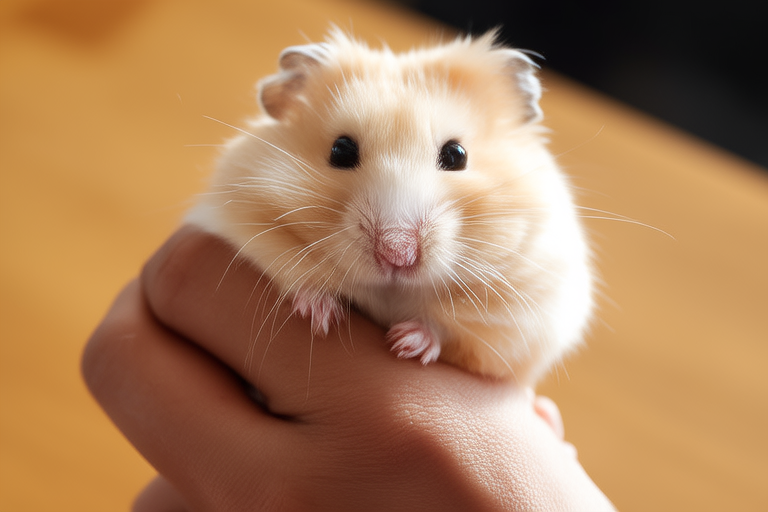Hamsters: The Ultimate Guide for New and Future Owners
Introduction to Hamsters
Welcome to the wonderful world of hamsters! These small, fluffy creatures have become increasingly popular as pets due to their cute appearance and relatively low maintenance. This comprehensive guide will walk you through everything you need to know about owning a hamster, from choosing the right breed to ensuring your pet stays healthy and happy.
Hamster Breeds
There are several different types of hamsters, each with its own unique characteristics. Here’s an overview of some of the most popular breeds:
- Syrian Hamsters: Also known as teddy bear hamsters, these are the largest of the hamster breeds and come in a variety of colors. They are solitary animals and should be kept alone.
- Dwarf Hamsters: There are three main types – Campbell’s dwarf hamsters, Roborovski dwarf hamsters, and Chinese dwarf hamsters. Dwarf hamsters are smaller and more social than Syrian hamsters.
- Chinese Hamsters: Despite their name, they are not considered dwarfs but rather a separate species. They have a more elongated body shape compared to other hamsters.
When choosing a hamster, consider factors like size, temperament, and whether you want a single or multiple pet setup.
Housing Requirements
A proper living environment is crucial for your hamster’s well-being. Here are some essential tips:
Cage Size
The cage should provide enough space for your hamster to move around comfortably. For Syrians, a minimum of 24 inches by 12 inches is recommended, while dwarfs can thrive in slightly smaller spaces.
Bedding
Use soft bedding materials such as paper-based products or fleece liners. Avoid pine or cedar shavings as they can irritate your hamster’s respiratory system.
Toys and Enrichment
Provide tunnels, chew toys, and exercise wheels to keep your hamster mentally stimulated. Rotate toys periodically to prevent boredom.
Diet Specifics
Proper nutrition is key to maintaining your hamster’s health. Their diet should consist primarily of high-quality commercial hamster food, supplemented with fresh vegetables and fruits. Ensure that any new foods are introduced gradually to avoid digestive upset.
- Fruits: Offer small pieces of apples, bananas, berries, and melons sparingly.
- Vegetables: Carrots, broccoli, spinach, and bell peppers are good choices.
- Treats: Stick to treats specifically made for hamsters to avoid overfeeding sugary snacks.
Always provide clean water daily, either via a sipper bottle or a heavy ceramic dish.
Exercise Needs
Hamsters are naturally active animals and require regular exercise opportunities. An exercise wheel is a must-have accessory, but remember to choose one without rungs to prevent injuries. Additionally, supervised playtime outside the cage in a safe area allows them to explore and stretch their legs.
Grooming Tips
Regular grooming helps maintain your hamster’s coat and prevents health issues. Use a soft brush designed for small animals to gently remove loose fur during shedding seasons. Keep nails trimmed using specialized clippers and consult a veterinarian if unsure about technique.
Common Health Issues
Like all pets, hamsters can suffer from various ailments. Some common conditions include:
- Obesity: Overfeeding leads to obesity which increases risk of diabetes, heart disease, and joint problems.
- Diarrhea: Caused by sudden changes in diet or contaminated food. Monitor stool consistency closely.
- Wet Tail: A serious bacterial infection characterized by diarrhea, lethargy, and hunched posture.
Regular vet checkups help catch potential issues early before they become severe.
Training Techniques
While hamsters cannot be trained in the same way as dogs or cats, there are ways to encourage positive behaviors:
- Handling: Start by placing your hand inside the cage so your hamster gets used to your scent. Gradually progress to gentle scooping motions.
- Positive Reinforcement: Reward desired actions with treats or praise.
- Consistency: Maintain routines and consistent commands for best results.
Remember, patience is key when working with hamsters.
Bonding With Your Hamster
Building trust takes time and effort. Spend quality time together each day, offering treats and engaging in play activities. Allow your hamster to approach you at their own pace. Over time, they’ll associate you with positive experiences and grow comfortable in your presence.
Conclusion
Owning a hamster can be a rewarding experience filled with joy and companionship. By understanding their specific needs and providing appropriate care, you ensure that both you and your furry friend enjoy many happy years together. Happy hamster parenting!
